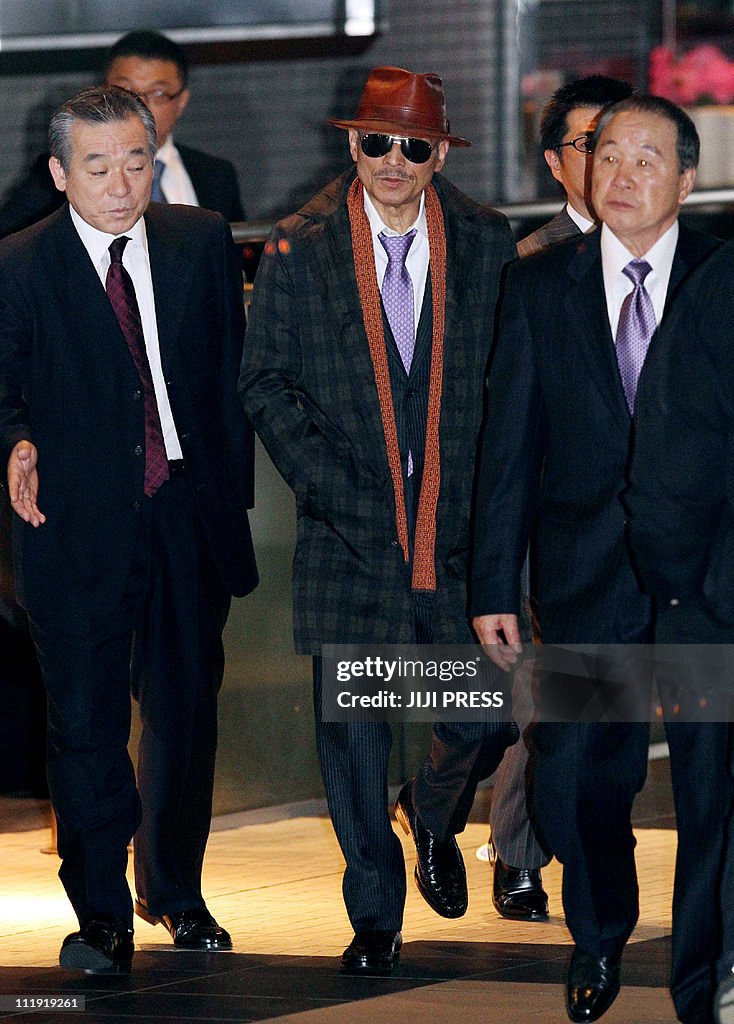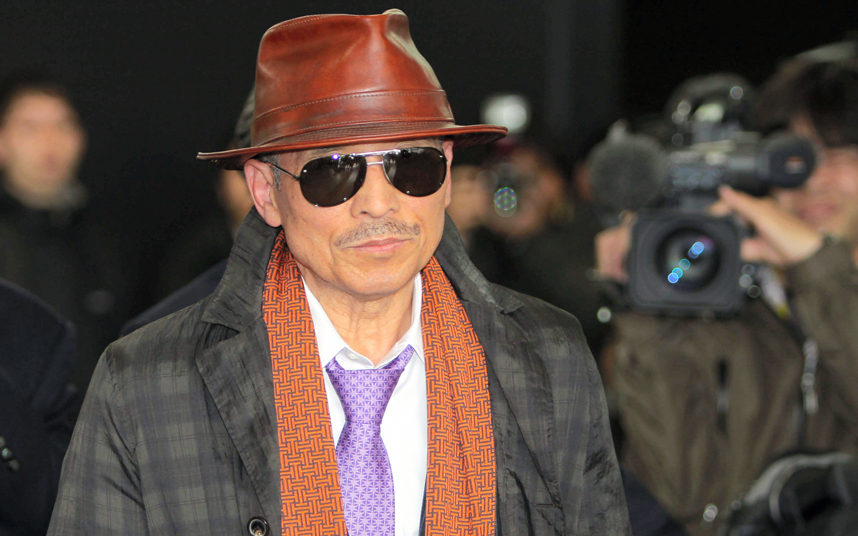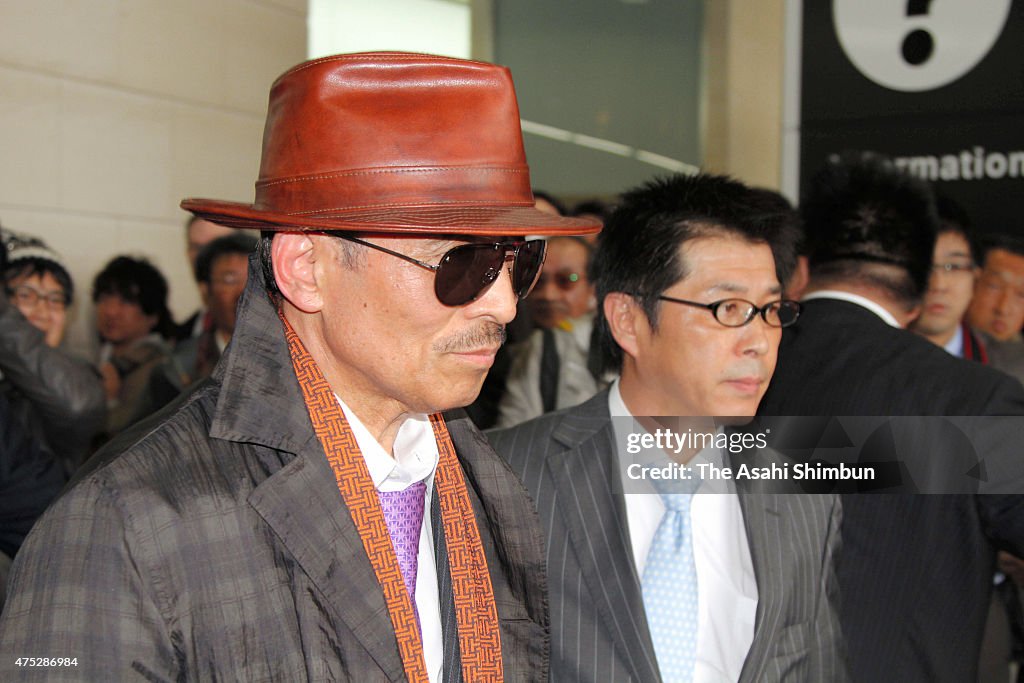Unveiling Kenichi Shinoda: Yakuza Boss, Criminal Life & Power - Explained
Is there a figure more shrouded in mystery and power than the kumicho of the Yamaguchi-gumi, Japan's largest and most notorious yakuza syndicate? The life of Kenichi Shinoda, also known as Shinobu Tsukasa, is a journey through the dark underbelly of Japan, marked by violence, intrigue, and a ruthless pursuit of dominance.
Born in Oita, Kyushu, on January 25, 1942, Shinoda's ascent within the Yamaguchi-gumi is a testament to his cunning and ruthlessness. He is not merely a criminal; he is a master strategist, a man who navigates the complex and often treacherous world of organized crime with calculated precision. His story, much like the history of the yakuza itself, is one of evolution, adaptation, and unwavering control. The very name "Kenichi Shinoda" resonates deeply within the intricate web of Japan's underworld.
| Category | Details |
|---|---|
| Full Name | Kenichi Shinoda (Shinoda Ken'ichi) |
| Also Known As | Shinobu Tsukasa |
| Date of Birth | January 25, 1942 |
| Place of Birth | Oita, Kyushu, Japan |
| Position | Sixth Kumicho (Supreme Kingpin) of the Yamaguchi-gumi |
| Criminal Activities | Murder, gun possession, organized crime, extortion, racketeering, and various other illicit activities. |
| Noteworthy Details | Known for his low profile, often using public transport (trains) instead of limousines. |
| Source | Wikipedia |
The origins of the yakuza, the very organization Shinoda now leads, can be traced back to the 1880s. Initially forming as federations of gamblers and street merchants, they evolved into complex criminal syndicates. They exist under the guise of being "humanitarian groups" or "ninkyo dantai," claiming to preserve public order and traditional Japanese values. In reality, however, their activities are far more sinister.
- Yajana Cano Bio Leaks Career Everything You Need To Know
- Lyna Perez Leak Scandal What You Need To Know Amp Updates
Shinoda's career in the yakuza is marked by a series of calculated moves, each one solidifying his position within the Yamaguchi-gumi. His rise to the top was not without its challenges. He faced numerous rivals, internal power struggles, and the constant threat of law enforcement. He has also faced a gang war that shows how intense the life of the yakuza can be, and it is the main source of why they face these challenges.
The Yamaguchi-gumi, the organization Shinoda helms, is Japan's largest yakuza organization, a sprawling network of interconnected factions that control a vast range of criminal enterprises. The group is named after its founder, Harukichi Yamaguchi, and its roots can be traced back to a loose labor union for dockworkers in Kobe before World War II. Under Shinoda's leadership, the Yamaguchi-gumi has remained a dominant force, controlling a substantial share of Japans underground economy. The group has a strong international presence. He was convicted of murder and gun possession, highlighting the level of violence associated with the yakuza.
The world of the yakuza is characterized by its strict codes of conduct and elaborate rituals. Members often display intricate tattoos, covering their bodies from head to toe, a visual representation of their allegiance and commitment. The yakuza also have their own language, a complex mix of slang and traditional Japanese, further separating them from the mainstream society.
- Elyse Smith Husband Decoding The Meteorologists Relationship
- Marius Borg Hiby Age Birthday Bio Facts Google Discover
The influence of the yakuza extends far beyond the realm of street crime. They are involved in a wide array of illicit activities, from drug trafficking and prostitution to extortion and financial fraud. They have often held significant sway over the construction industry, the entertainment world, and even some aspects of the political landscape. The yakuza's activities are a constant threat to the rule of law in Japan.
The challenges facing the yakuza are significant. Law enforcement agencies have intensified their efforts to dismantle these criminal organizations, employing sophisticated surveillance techniques and crackdowns. The rise of new technologies has also made it more difficult for the yakuza to conduct their operations discreetly. The recent death spiral faced by the yakuza is also partly due to an incident at a sumo tournament in 2009.
Moreover, the Japanese publics perception of the yakuza has shifted. While once tolerated as a necessary evil or even romanticized, they are now increasingly viewed with disdain and fear. This shift in public opinion, coupled with relentless pressure from law enforcement, has forced the yakuza to adapt or face extinction. The case involving Shinoda is one of the few that implicates a top yakuza boss in a murder of a civilian.
Kenichi Shinoda's leadership style is shrouded in secrecy. He is known for his low profile and his preference for using public transport, which is a stark contrast to the flamboyant lifestyles of some of his predecessors. It is difficult to provide information on his current situation. However, it is known that, he remains the sixth and current kumicho, demonstrating his resilience and unwavering grip on power.
The yakuza's decline also stems from various factors, including the aging of its members, the difficulty of recruiting new members, and the increasing economic opportunities available in legitimate sectors of the economy. These changes and the public perception have made it more difficult to engage in criminal activities.
The world of organized crime is, however, a complex and evolving landscape, and despite facing challenges, the yakuza continue to adapt and seek new ways to maintain their influence. The yakuza has always found ways to persevere, change and re-invent themselves, even in changing times.
The story of Kenichi Shinoda is not just a chronicle of a criminal's rise to power. It is a window into the hidden side of Japan, a nation of contrasts where tradition and modernity, order and chaos, exist in a delicate balance. His actions and leadership continue to shape the future of the yakuza, an organization steeped in history and mystery.
In a world where power is often measured in wealth and influence, Pablo Escobar stands out. With a speculated wealth ranging from $9 to $30 billion, he became the worlds richest criminal. He also was the worlds most dangerous, responsible for the deaths of three Colombian presidential candidates, over 200 judges, dozens of journalists, over 1,000 police, and countless civil citizens died under his command.
Yoshio Kodama, an early yakuza godfather, rose with imperial Japan in the 1930s and '40s, but survived its downfall and continued to prosper in the postwar era. He spied for the Japanese government in China during the war years and became immensely wealthy by smuggling valuable metals back to Japan. These stories all exemplify the dangerous world that surrounds the yakuza. This serves as a reminder of the far-reaching impact of criminal organizations.



Detail Author:
- Name : Alexandrea Beahan
- Username : sschumm
- Email : nicholaus.farrell@yahoo.com
- Birthdate : 1978-08-28
- Address : 165 Halvorson Rapid Port Kaydenport, MT 77665-7710
- Phone : 520.284.4836
- Company : Walker LLC
- Job : HR Specialist
- Bio : Qui sequi ipsam veritatis qui. Officia sed recusandae qui dolores. Et et officia qui aut.
Socials
instagram:
- url : https://instagram.com/coltwehner
- username : coltwehner
- bio : Ut tenetur sit consequatur vel minus. Qui et quibusdam dolor vero alias fugiat.
- followers : 3641
- following : 1619
linkedin:
- url : https://linkedin.com/in/cwehner
- username : cwehner
- bio : Ratione accusamus aut error aut ducimus.
- followers : 6580
- following : 374